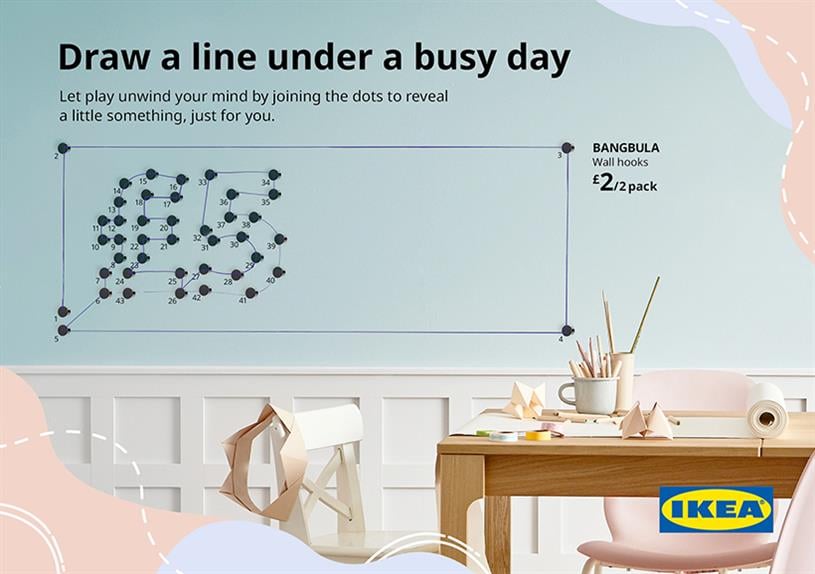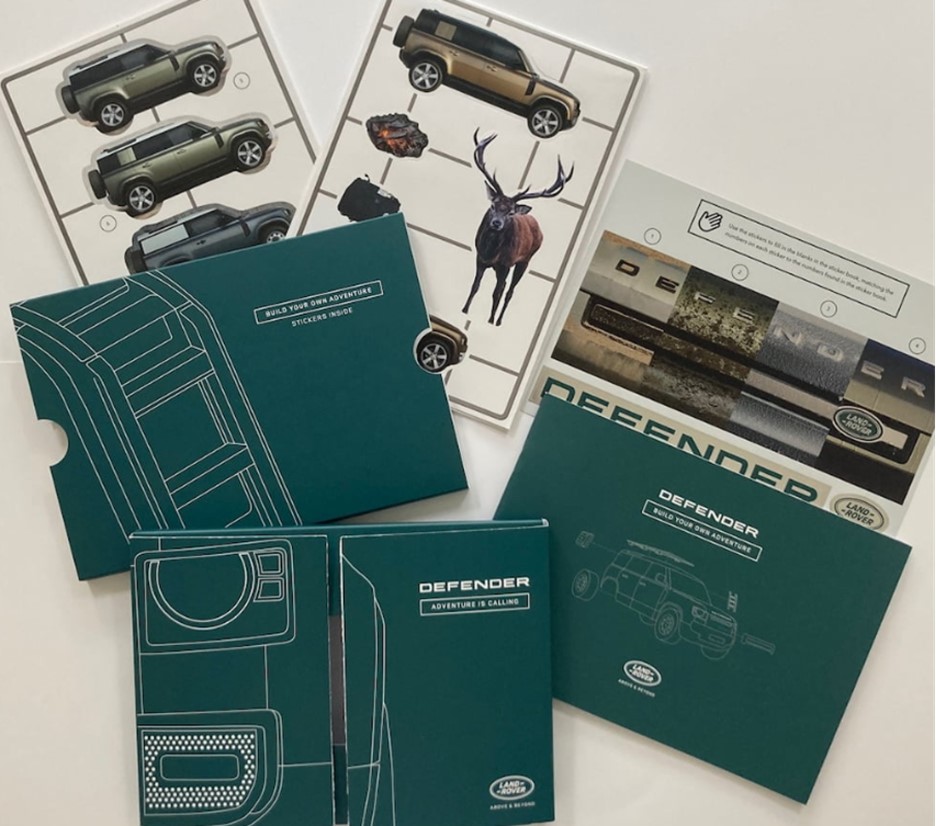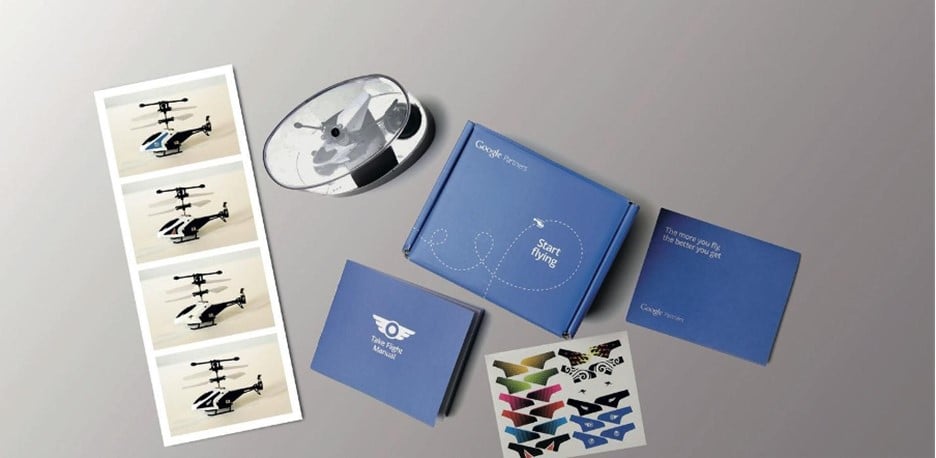
Virgin Media O2 launches summer online safety campaign
Virgin Media O2 and Internet Matters spotlight the importance of having conversations about online safety and starting them early

Communications that spark curiosity, creativity, and engagement don’t always need to be online, says Marketreach’s Sonia Danner

In today's fast-paced world, the mantra "slowly slowly catchy monkey" has taken on new significance as we witness the acceleration of slowing down. Consumer behaviour is evolving, with younger generations, in particular, embracing what's been termed as "Monk Mode" — moments of intentional digital withdrawal, according to recent research by VML Intelligence’s Future100 report.
Today consumers demand brand messaging that resonates immediately and authentically. However, they're also adept at tuning out advertising noise. The key to success in this environment lies in extending or capturing attention through compelling content, immersive experiences, and playful activities. Activities that spark curiosity, creativity, and engagement in a way that doesn’t overwhelm. This doesn’t always need to be online.
We recently worked on an independent research report with WARC, and interviewed leading industry professionals on ‘The Attention Advantage’; exploring this burgeoning metric, building on previous research to explore what marketers need to know in 2024 to gain that all important attention of their target market.
Here I’ll explore some of the creative ways brands have commanded attention and high dwell-times in real life, with tangible, playful experiences that appeal to people’s renewed desire for slower, more purposeful living.

In early 2022, with household bills rising fast and COVID still fresh in the nation’s memory, IKEA UK saw in-store traffic decline sharply. The retailer needed to plug a £1m sales gap but was determined not to default to simple price discounting.
Rather, it wanted a solution that would strengthen the brand’s reputation for playfulness. On average, members of IKEA’s loyalty programme spend 24% more than non-members. Given their addressability and proven interest in the brand, these Family Members were quickly identified as the priority target.
In a digital age, with fleeting attention spans, brands are embracing innovative and creative approaches to grab audiences’ attention.
Sonia Danner, Senior Marketer at Marketreach
IKEA then asked itself two questions. How could it combat its customers’ rising levels of stress by bringing them a moment of playfulness? And how could it do so in a way that would also maximise response? The solution was a dot-to-dot mailer. By resolving the puzzle, recipients revealed a threshold discount: “spend £50 in-store and get £5 off”.
In just three weeks, 14,000 Family Members redeemed their voucher. This translated to over £1.6m in sales at an average of £116 per customer – well ahead of the £50 threshold. Just as importantly, IKEA proved that mail cannot only stimulate transactions. It can also reinforce brand equity.
Marketreach’s research with WARC demonstrates why mail enjoys an attention advantage; the channel stimulates a physical as well as a mental interaction; over 80% of items that have an envelope are opened. Mail gets high levels of consumer attention compared to other media; on average 108 seconds, with the average piece of mail viewed more than twice in the week of receipt, and 58% retained for future reference.

Gamification can also be used in a unique way to target a hard to reach audience such as via the use of nostalgia, which Land Rover harnessed to encourage audiences to “build their own adventure.”
With two body designs, six trim levels, seven exterior colours and 119 individual accessories, New Defender was the most customisable Land Rover ever. But the pandemic meant prospects were unable or unwilling to visit retailers. Land Rover wanted to make it easy for prospects to explore their perfect vehicle and tailor the New Defender to their lifestyle.
Land Rover and its agencies Spark44 and Edit mailed an ‘offline configurator’ to stimulate interest, educate and overcome choice paralysis when configuring a car.
To resonate with a Gen X male audience, Land Rover based the pack on the Panini football sticker album they had bought as children. The stickers helped them explore the full range of models, specifications, styling and accessories and build their dream car. Included were stickers featuring beautiful, rugged backdrops such as deserts, mountains and forests, to highlight the practicality, capability and durability of the car. Fold-out landscape pages allowed prospects to put their New Defender into their selected outdoor environment. A QR code linked to an online version.
This highly interactive mailing tapped into a sense of nostalgia and security, which many longed for during the pandemic. And the tangibility of mail allowed Land Rover to stand out from the plethora of digital communications customers were receiving during lockdown. This nostalgic and interactive direct mail pack generated significant renewed interest and led to 2,455 New Defender prospect enquiries - a response rate of around 25%.

As a great example of how creativity isn’t limited to consumer marketing, Google provided their Partners with a welcome break in the day. They noticed members of Google Partners were not completing their profiles and were missing out on exclusive benefits.
To fix this, Google mailed Partners a remote-controlled helicopter. Because it was hard to fly, it had a clear analogy with the Google Partners programme: the more you practise the better you get. Similarly, with Google Partners: the more you put in, the more you would get out.
The business saw a 26% increase in completed company profiles and a 42% increase in completed individual profiles. And because people shared the fun on social media there was an 18% increase in new companies signing up to the scheme.
Not only is mail highly effective at generating meaningful media attention, it’s one of the most cost-efficient channels at delivering against this objective, even when you invest in a fully functional helicopter!
In a digital age, with fleeting attention spans, brands are embracing innovative and creative approaches to grab audiences’ attention. By gamifying their marketing experiences, companies like IKEA, Land Rover, and Google Partners achieved remarkable results.
These examples highlight the power of gamification in cutting through advertising noise, grabbing attention, and ultimately driving tangible business outcomes.
Sonia Danner is a Senior Marketer at Marketreach
Looks like you need to create a Creativebrief account to perform this action.
Create account Sign inLooks like you need to create a Creativebrief account to perform this action.
Create account Sign in